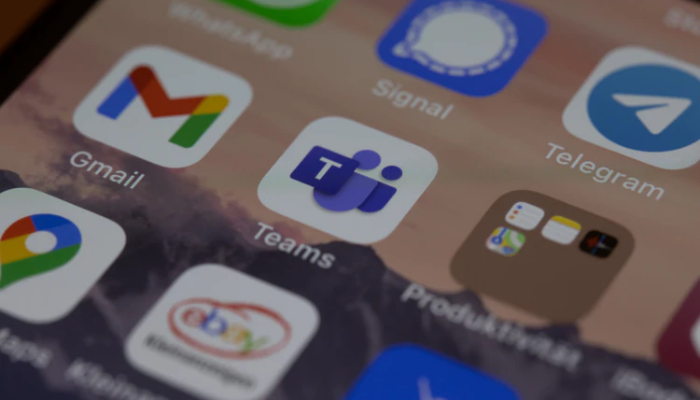Ah, Teams.
The backbone of WFH and the brand champion of these sombre times. Many impersonators have made inroads along the way, but there was always only going to be one winner. Although in any other time in history Teams would be the unappreciated stepchild of the Microsoft Office family, it’s now the blue-eyed golden gal – and we’re better off for it.
Our new way of living and the introduction of hybrid, home-meets-office workspaces has seen Teams surpass even Word and PowerPoint as Microsoft’s most-used tool. Truth be told, it’s even replaced decades long concepts such as boardrooms or in-person appointments, but that’s a story for another day. Our focus today is unpacking the future of communications while asking ourselves that all important question – can Microsoft Teams replace your Phone System?
First off, why Teams?
Well, in light of the pandemic, Teams has seen its growth increase exponentially. Don’t believe us? We’ve done our homework.
- At present, there are an estimated 145 million daily Teams users worldwide.
- As of April 2020, this number was “only” around 44 million.
- In the first month of lockdown alone (March – April 2020), Teams usage jumped to 75 million (or a 70% increase in 30 days).
- By June of the same year, this usage was up by 900% overall.
- The entire country of Russia has a population of 146 million – there are as many people using the Teams app per day as there are living in Russia. Let that sink in!
In the first few months, Skype and Zoom may have had a shout, but as the marathon continued Teams began to pull away – and for good reason. It’s rich features and diverse functionality allow for full business continuity without the hassle of intense training and processes. Most technologically savvy employees can figure out the ins-and-outs relatively easy, and it’s a bug-free, simple solution to meeting, calling and conferencing dilemmas.
And, with more people using the app than even Microsoft themselves may have anticipated (although we did hear some theories about Bill Gates…), SME’s and corporations are sitting up and paying attention. Traditional phone systems are sadly becoming archaic, and many of the features offered by Teams are in fact crucial to the new working world. In many ways, the move makes sense on paper, but is it genuinely worth it?
The Pros and Cons of Teams:
Naturally, a large part of the allure of Teams is down to the capabilities offered by the programme not found on traditional phone systems. Video calls, live chat, file storage, sharing and group meetings – it’s like a real life office space. However, it’s important to note that at it’s core, the software wasn’t designed for enterprise-grade communications any more than a Rolls Royce was created for off-road racing. True, the former may be the pinnacle of innovation and technology, but there are certain heavy duty capabilities only suitable to products specifically designed around them.
True, Teams does have so much going for it that your day-to-day needs are more than catered for, but what about when your communication needs expand beyond this?
It’s important to evaluate your business needs and decide whether Teams is truly viable. Make no mistake, many small businesses may actually enjoy simplified communication and find it more conducive to their working model (provided, of course, that these brands work within their parameters and don’t require anything higher-grade). However, when you factor in functions such as multi-location or advanced call routing, queuing and reporting, you may find out that the switch is not as appealing as you initially thought.
What you need to consider:
Before making the choice to swap out your existing system, you need to ask yourself if the new one (in this case, Teams) will negatively impact your customer experience. Consider factors such as call quality, extensions, uptime and transfers (which are all standard features with even the most basic Phone Systems). Enterprise-level functionality requires a system that is speedy, efficient and built for high-demand, high-volume call rates and, sadly, Teams was simply not designed for large-scale communication operations.
Make no mistake, the app has been a lifesaver to most WFH users and many a brand – including our own. However, it’s a collaboration system with calling features rather than a calling platform on its own. Any enterprise who makes its bread and butter off intense communications requires in depth-features and functionality, and Teams (no matter how great) wasn’t designed for such.
Microsoft Teams is a fantastic platform, of that there’s no doubt. However, the simple answer is no, it can’t be used to replace an existing phone system if you’re a brand that requires more than basic functionality. On a smaller scale wherein internal comms and meetings are your basic requirements, sure, but the moment you factor in enterprise-voice capabilities, you’d be better off with something created for such a purpose. In fact, you may actually compromise your customer experience and, ultimately, your bottom line through trying to fit a square peg in a round hole, and it’s always better to be penny wise AND pound smart.
Our suggestion? Amalgamate the two. Use Teams for its intended purpose, and for allowing your collaboration internally to skyrocket.
Your employees deserve the best tools in order to perform at their peak, and modern communication needs demand modern communication solutions.
Let your Teams handle your Team, but don’t shoot yourself in the foot and accidentally hit your customers in the process.














